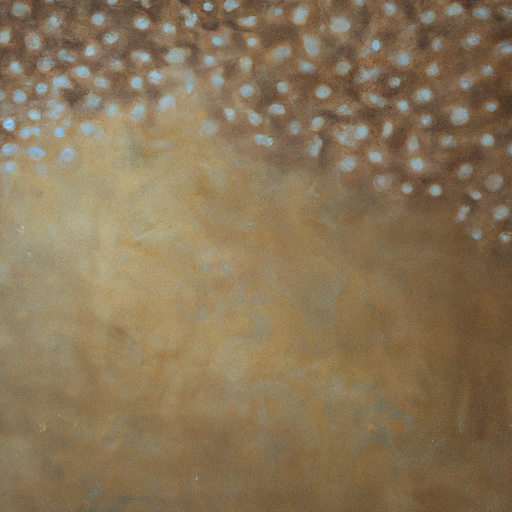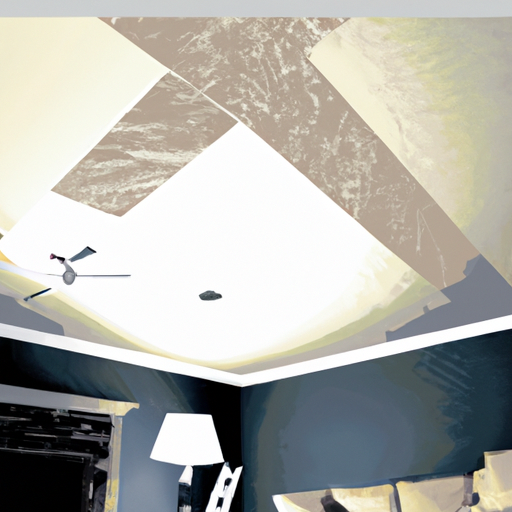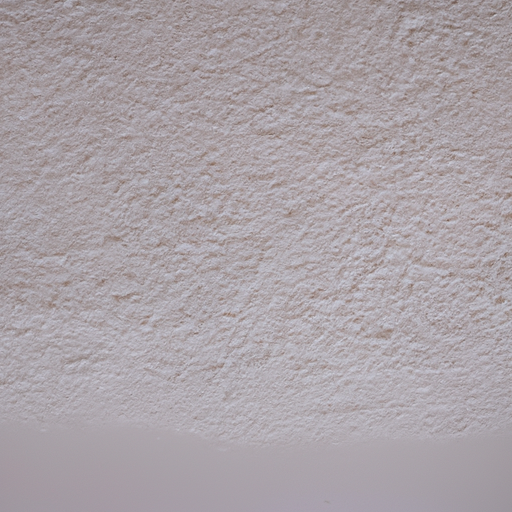Popcorn ceilings have the advantages of reducing noise and concealing imperfections, but they are difficult to clean and may contain asbestos. They can negatively affect the value and marketability of housing, but some buyers may not notice this drawback. Popcorn ceiling removal or renovation can be time-consuming, especially if asbestos is present. They are falling in popularity and can scare off potential buyers.
When it comes to buying a home, there are many factors to consider. From location to layout, every aspect plays a crucial role in determining whether a property is worth investing in. One often-overlooked feature that can divide opinion is the presence of a popcorn ceiling. Once a popular design choice in the mid-20th century, these textured ceilings have become a point of debate among home buyers. In this article, we’ll explore the pros and cons of buying a home with a popcorn ceiling, delve into the impact they can have on home value, and provide insight from real estate agents and homeowners on the popularity and pitfalls of this retro feature. So if you’re looking for a new home and aren’t sure whether to embrace or avoid popcorn ceilings, read on to make an informed decision.
- 1. “The Pros and Cons of Popcorn Ceilings: Should You Buy a Home With This Retro Feature?”
- 2. “Understanding the Popcorn Ceiling: What You Need to Know Before You Make a Home Buying Decision”
- 3. “The Impact of the Popcorn Ceiling on Home Values: Is It a Deal Breaker or an Opportunity?”
- 4. “Removing or Renovating Popcorn Ceilings: Weighing the Costs and Benefits for Home Buyers”
- 5. “Expert Insights: Real Estate Agents and Homeowners Discuss the Popularity and Pitfalls of Popcorn Ceilings”
1. “The Pros and Cons of Popcorn Ceilings: Should You Buy a Home With This Retro Feature?”

Popcorn ceilings, also known as acoustic ceilings or cheese ceilings, were a popular trend in the mid-20th century. While some homeowners find them charming and retro, others find them outdated and difficult to maintain. If you’re considering buying a house with a popcorn ceiling, it’s important to weigh the pros and cons before making a decision.
One of the advantages of popcorn ceilings is their ability to dampen noise. The textured surface helps absorb sound, making it ideal for spaces where noise control is important, such as media rooms or bedrooms. In addition, popcorn ceilings can hide ceiling flaws or inconsistencies, providing a cost-effective way to hide imperfections without the need for extensive repair or remodeling.
However, popcorn ceilings have several disadvantages that potential buyers should be aware of. First, their texture makes cleaning difficult. Dust and cobwebs tend to accumulate in crevices, requiring extra effort and special cleaning methods to maintain their appearance. in addition
2. “Understanding the Popcorn Ceiling: What You Need to Know Before You Make a Home Buying Decision”

Popcorn ceilings, also known as acoustic ceilings or cheese ceilings, were popular in the mid-20th century for their ability to hide imperfections and absorb sound. However, their popularity has declined significantly over the years, and many homeowners now consider them outdated and unsightly.
Before making the decision to buy a house with a popcorn ceiling, it is important to understand the pros and cons associated with them. One of the main benefits of popcorn ceilings is their ability to reduce noise, making them ideal for spaces where soundproofing is required, such as home theaters or bedrooms. Additionally, their textured surface can help hide any imperfections or cracks in the ceiling, eliminating the need for frequent repairs or maintenance.
However, despite these advantages, there are a few disadvantages that should be considered. The main concern with popcorn ceilings is that they may contain asbestos. Asbestos was widely used in popcorn ceiling until the late 1970s, when its health risks became widely known. If the house you
3. “The Impact of the Popcorn Ceiling on Home Values: Is It a Deal Breaker or an Opportunity?”

Popcorn ceilings, also known as acoustic ceilings or cheese ceilings, were popular in the mid-20th century for their ability to hide imperfections and reduce noise. However, they have fallen out of favor in recent years, with many homeowners choosing to remove or replace them due to their outdated appearance and potential health concerns.
When deciding whether to buy a home with a popcorn ceiling, it’s important to consider the impact on home value. Popcorn ceilings can have a significant impact on the overall appeal and marketability of a property.
Having a popcorn ceiling can be a deal breaker for some potential buyers. These textured ceilings can make a home look dated and require extra effort and money to remove or replace. In a competitive real estate market, buyers may be hesitant to invest in a property that needs immediate renovations to bring it up to modern standards.
On the other hand, there are buyers who may consider popcorn ceilings as an option. These people may not notice this cosmetic flaw
4. “Removing or Renovating Popcorn Ceilings: Weighing the Costs and Benefits for Home Buyers”

Popcorn ceilings, also known as acoustic ceilings, were popular in the mid-20th century for their ability to reduce noise and cover imperfections. However, over time, they have lost their appeal and are now considered outdated and aesthetically unattractive. If you’re considering buying a home with popcorn ceilings, it’s important to carefully weigh the costs and benefits of removing or updating them.
One of the main concerns with popcorn ceilings is the potential presence of asbestos. Popcorn ceilings installed before the late 1970s may contain asbestos fibers that are a serious health hazard if disturbed. Therefore, it is extremely important to check the ceiling for asbestos before making any decisions. If asbestos is found, it is highly recommended that you hire a professional asbestos removal company to safely remove the popcorn structure.
Even if there is no asbestos, removing or renewing a popcorn ceiling can be a time-consuming and messy process. Do-it-yourself removal is possible, but requires careful scraping and reprocessing, which can be physically challenging
5. “Expert Insights: Real Estate Agents and Homeowners Discuss the Popularity and Pitfalls of Popcorn Ceilings”

Popcorn ceilings, also known as acoustic ceilings, were a popular design trend in the mid-20th century. However, their popularity has declined over the years, and many homeowners and potential buyers find them outdated and unattractive. In this section, we explore the expert opinion of real estate agents and homeowners, shedding light on the popularity and pitfalls of popcorn ceilings.
Real estate agents often encounter clients who express concerns about popcorn ceilings when buying or selling a home. According to many agents, houses with popcorn ceilings tend to stay on the market longer because they can become an eyesore to potential buyers. These textured ceilings are perceived as a relic of the past and can make a home look outdated. Real estate agents note that while some buyers may be open to the idea of removing or covering popcorn ceilings, others may see it as a major renovation project and put them off buying a property.
Homeowners who have experienced popcorn ceilings firsthand can also offer valuable insights. Something
In summary, the decision to buy a house with a popcorn ceiling ultimately comes down to personal preferences and the specific circumstances of the home buyer. While popcorn ceilings can have their drawbacks, such as potential health issues and the difficulty of cleaning and updating, they also have their advantages, such as their retro charm and potential cost savings. Additionally, the impact of a popcorn ceiling on home value can vary depending on the market and the overall condition of the property. Ultimately, it’s important for homebuyers to carefully weigh all the pros and cons, consider the opinions of real estate experts, and weigh the costs and benefits before making a decision.
 Purex find
Purex find